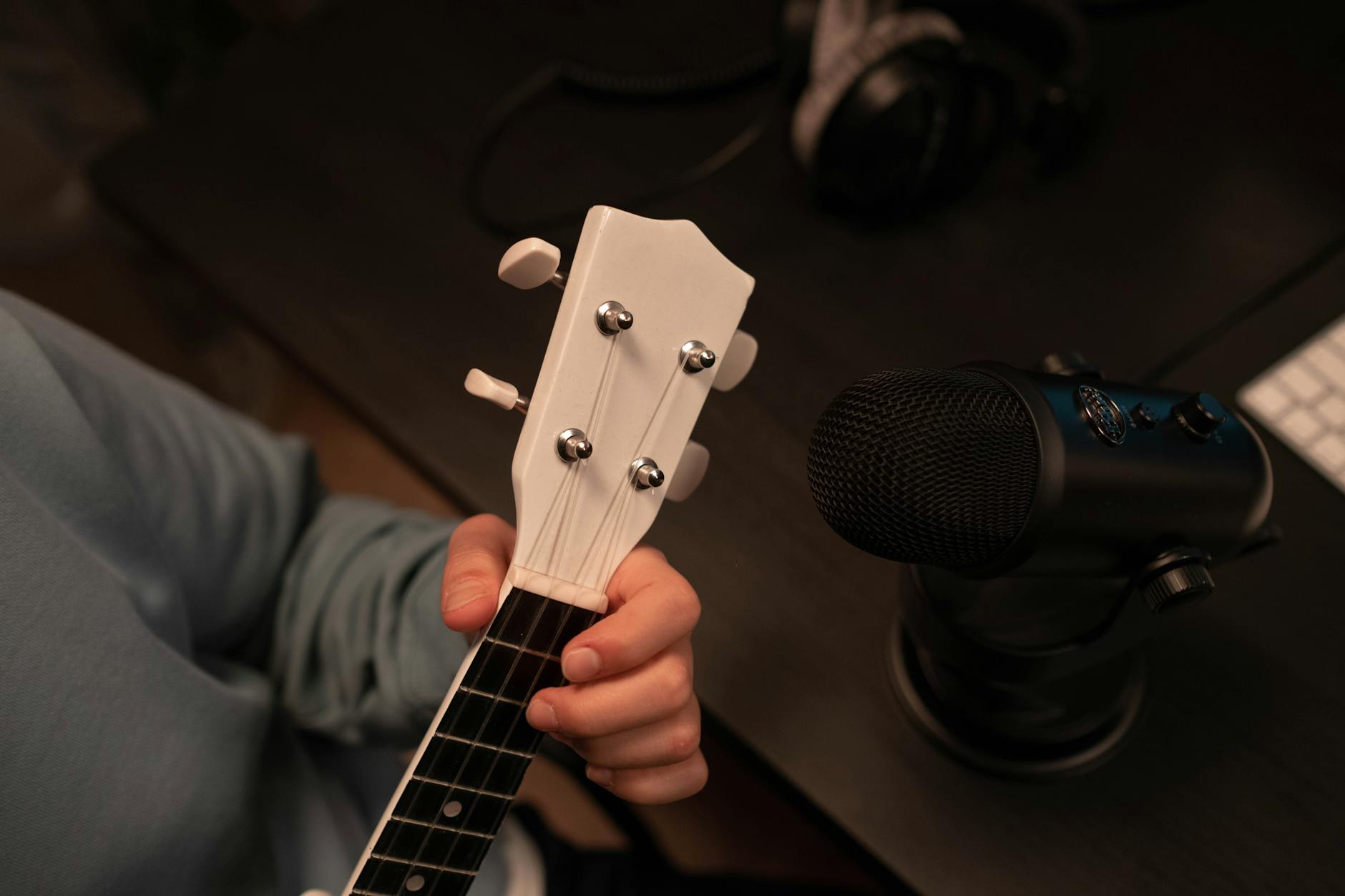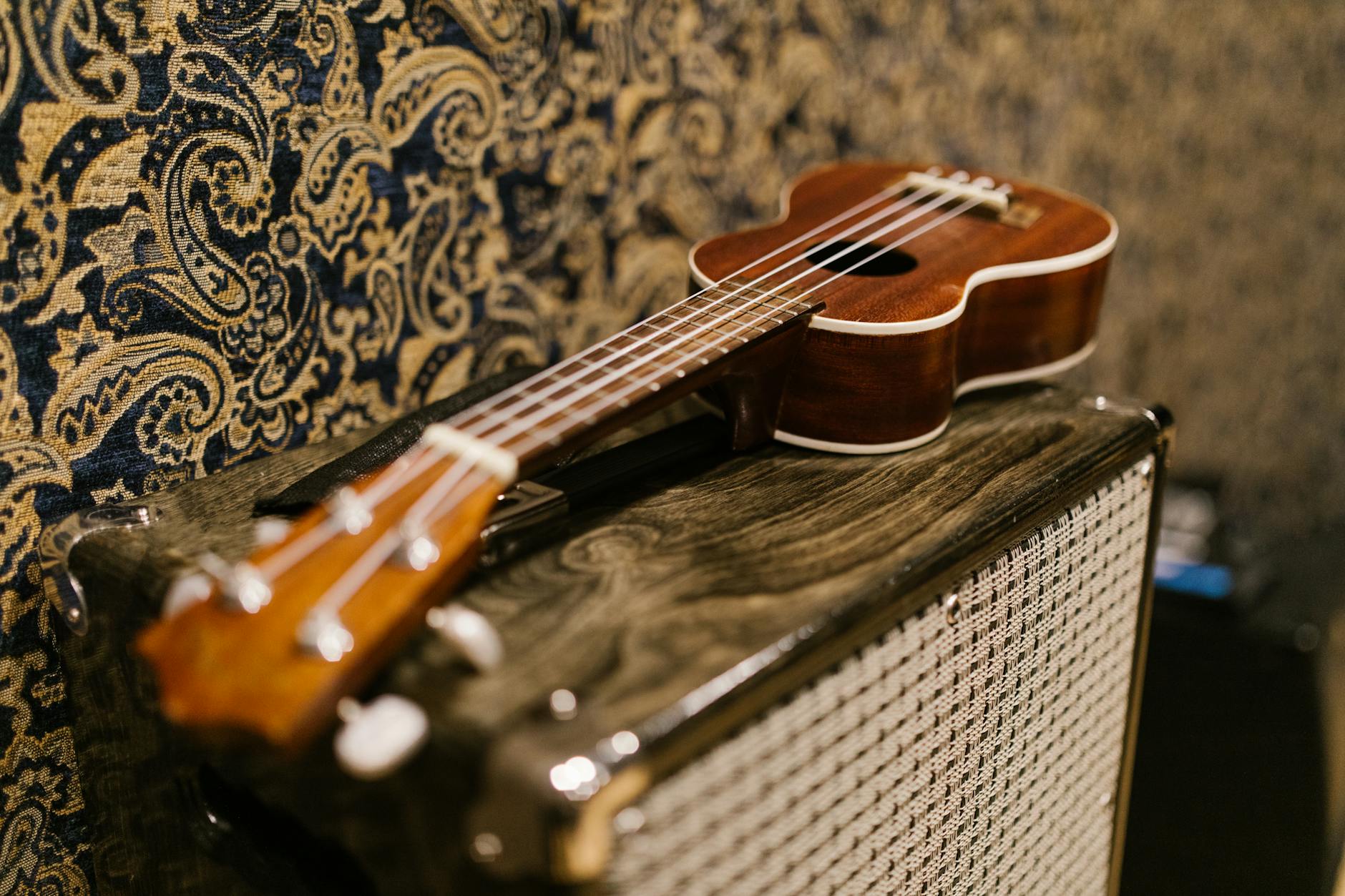Can You Record Acoustic Guitar That Doesn’t Sound Thin or Noisy?
Learn how to record acoustic guitar clean sound at home—fix noise, get warmth, and capture pro results. Discover easy steps for warm, clean recordings.

Ever hit record on your acoustic, only to hear a thin, noisy mess instead of the warm tone you get in the room? Frustrating, right? For most home players, recording acoustic guitar without unwanted noise or a brittle, weak sound feels impossible. Buzz, room echo, and harsh pick noise all seem to sneak in the minute the red light goes on. The truth: You don’t need a pro studio—or a bottomless gear budget—to capture a clean, full acoustic sound. Simple gear tweaks, smart mic placement, and a few easy room fixes can make your tracks warmer, clearer, and more professional—no magic required. This guide lays out everything you need to record acoustic guitar with a clean sound, free from noise and thinness—using the tools you already have.
What You'll Learn:
- Learn exactly why acoustic guitar recordings sound thin or noisy at home.
- Discover the right gear choices for clean, full tone (even on a budget).
- Master proven mic placements and affordable room fixes for warmth.
- Get step-by-step noise reduction advice for hum-free, quiet tracks.
- See easy post-processing tips to polish your sound (without overdoing it).
- Unlock the most practical community solutions that actually work for bedroom guitarists.
Why Does My Acoustic Guitar Recording Sound Thin or Noisy?
Press record, and suddenly the magic disappears—thin, brittle tone, background hiss, and string buzz take over. It's a problem nearly every home guitarist faces. Understanding why this happens is step one in finally capturing a clean, warm acoustic sound that stands up in any mix.
The Real Reasons Acoustic Recordings Fall Flat
Four main suspects turn great playing into thin, noisy recordings. Wrong mic placement tops the list—point a mic at the soundhole and expect boomy, muddy sound or exaggerated pick noise. Untreated rooms rank second. Reflective walls and hard surfaces bounce harsh frequencies back into the mic, while background noise sneaks in from outside or appliances. Third: old, dead strings. Even if they feel comfortable, lifeless strings kill the natural resonance and clarity that microphones love. Finally, cheap or damaged cables can inject crackle, hum, or low‑level buzz, sabotaging even the best performance.
- Poor mic technique exaggerates the worst frequencies
- Untreated rooms amplify flaws, not beauty
- Worn-out strings and bad cables add unwanted noise
- Ignoring gear grounding invites hum and buzz
Why Fixing It at the Source Matters Most
“Get it right at the source”—every recording engineer repeats it for a reason. Even the world’s fanciest plugins can’t save a recording that’s noisy, thin, or muddy from the start. According to mastering.com, proper mic setup and environment choices decide if a track sounds pro or not. So, putting time into room setup, mic placement, and guitar prep pays off in every session.
You Don’t Need a Pro Studio—Just Smart Choices
Players often believe studio magic comes from racks of high-end gear. Truth is, smart tweaks beat expensive gear nearly every time. Blankets and pillows can improve room sound as much as foam panels. Setting up with a basic small-diaphragm condenser and a shielded cable—plus a little technique—can bring out rich, noise-free acoustic tone. Every problem on this list has a fix that works in a spare bedroom.
Start with the basics. Getting them right delivers professional results even with average gear. The rest of this guide covers every practical step.
Essential Gear and Setup Tweaks for Clean Acoustic Guitar Sound
Capturing a warm, clear acoustic track doesn’t mean splurging on boutique gear. It’s about making smart decisions with what you have. A few core upgrades—often overlooked—solve most problems right away.
Mic Types and What They Do for Your Tone
Four main mic styles rule the acoustic world: small-diaphragm condensers (SDCs), large-diaphragm condensers (LDCs), ribbons, and dynamics. SDCs like the Rode NT5 or Audio-Technica AT2021 shine for picking up detail and fast transients—they grab fingerstyle subtleties without dulling natural brightness. LDCs, such as the AKG C214, give a little more body and warmth. Ribbon mics (think MXL R144) smooth out pick attack and harsh highs, but need clean preamps. Dynamics (like the trusty Shure SM57) are budget-friendly, but may need EQ for sparkle.
- SDC: Clean, natural detail—ideal for fingerstyle or articulate playing
- LDC: Smooths out edges, adds warmth
- Ribbon: Darker, softens pick noise, needs more gain
- Dynamic: Handles high volume, good for loud rooms
Strings, Cables, and Grounding: The Overlooked Noise Fixes
No plugin can save dull strings or intermittent cables. Fresh strings—broken in for a couple of hours—give sparkle and longer sustain, but avoid brand-new zing. Use shielded, well-made cables (Mogami or Planet Waves are standouts), and plug gear into the same power strip to prevent ground loops. According to MusiciansHQ, these details make a dramatic difference in clean, noise-free recordings.
DI Boxes and Layering: Getting Fullness Without Room Issues
Plugging directly in via a DI box offers a clean, room-independent signal: perfect if your space is small or noisy. But a DI alone can sound brittle. The trick is to blend a DI track under a mic’d track for more body and control. Try this:
- Record one track with a mic placed at the 12th fret
- Record a DI track from your pickup system
- Blend, starting with the mic track up front and DI added until fullness appears
The right gear and simple setup tweaks solve half the battle, setting you up for warmth and clarity in any space.
Mic Placement and Room Tricks: The Secret to a Warm, Full Recording
Even the right gear falls short if the mic's in the wrong place—or the room's working against you. Placement and environment decide whether a recording's full and natural or thin and echoey. A few proven tricks make the difference.
Finding the Sweet Spot: 12th Fret and Beyond
The most forgiving starting point: aim a condenser mic at the 12th fret, 6–12 inches away, and angle slightly towards the soundhole. This balances detail and warmth while avoiding boomy lows and clicky highs. The proximity effect can boost low-mids if the mic's too close—back off to 8–12 inches to control this. Experiment with:
- 12th fret, 6–12 inches (classic, balanced sound)
- Bridge area, angled up (more body, sometimes more pick noise)
- Near the soundhole, but off-axis (fullness, risk of boominess)
Try moving the mic just an inch or two—tiny changes transform the recorded sound. Record short samples at several positions, then pick the best.
Stereo Miking and Phase: Adding Depth Without Mud
Stereo setups—like XY (two mics at a 90-degree angle, capsules touching) or spaced pair (two mics 12–16 inches apart)—add width and realism. Always follow the 3:1 rule: keep mics three times as far from each other as they are from the guitar to avoid phase issues. Keep cables and stands out of the way to maintain flexibility and quiet operation. Want depth? Pan the two signals hard left and right in your DAW for a lush stereo field. Serena Magazine offers visuals and deeper how-tos.
Room Fixes: Quick Acoustic Treatment for Home Studios
Turns out, the room shapes your tone as much as the guitar. Reflective rooms add harshness and reverb tails. Tame them using what you have. Thick blankets over windows, rugs on hard floors, and bookcases as diffusers eat up nasty reflections fast. For noisy apartments, recording at off-peak hours or using closet isolation cuts traffic bleed, too.
- Hang blankets and duvets on walls and doors
- Lay a thick rug under your chair
- Surround the guitar area with cushions or pillows
Even a handful of tweaks can turn a harsh bedroom into a balanced recording space. Control mic placement and tame the room, and you'll finally capture the warm, full sound that's always been there.
Noise Control: Eliminating Hiss, Hum, and Unwanted Sounds
Even perfect playing can get lost under unwanted hiss, hum, or buzzing pick sounds. That noise doesn't have to ruin your next acoustic recording. Sound engineering pros rely on a few key habits and fixes to keep tracks clean every time.
Taming Pick and Handling Noise
Aggressive pick attack, rough fingernails, and clumsy hand movement all show up under the microscope of a condenser mic. Softer, rounded picks reduce click. Fingerstyle lightens attack noise. Muting behind the fretting hand with fingers or a soft cloth cuts string squeaks. Recording at moderate volume also trims down background hiss that rides along with high-gain signals. Ribbon mics can help, too; their natural roll-off tames harshness right at the source.
- Use softer picks for less click
- Try fingerstyle for ultra-clean tracks
- Mute strings with spare hand or a cloth
- Keep hands relaxed and movement controlled
Cable and Power Solutions for a Quiet Signal
Cable sprawl and dirty power make for a noisy studio. Keep cables short and out of the way. Use shielded cables (even budget brands like Hosa or Pro Co work if shielded properly). Plug all equipment into one power strip to eliminate ground loops—a classic culprit for hum. Guitarpickreviews.com explains that simple power strip tricks and cable swaps fix most electrical noise instantly.
Troubleshooting: What to Do When You Still Hear Noise
Still hearing hum? Run through this checklist:
- Mute tracks one by one to find the noisy link
- Try another cable or power supply
- Change mic position—sometimes picking up interference
- If possible, record in a different room or at a quieter time
- Swap to a dynamic mic if issues persist
Tight cable runs, basic isolation, and gentle technique nearly always clean things up. And if stubborn noise remains, a careful walk through these steps usually reveals the fix.
Polishing Your Track: Minimal Post-Processing for a Pro Sound
With a warm, noise-free acoustic track, mixing becomes a breeze. The trick is knowing how little you actually need to do—subtlety keeps things sounding natural and clean.
EQ and Compression: Subtle Moves That Make a Difference
Skip broad, heavy EQ moves. Instead, gently roll off lows below 80Hz, cut out harshness around 2–4 kHz if needed, and boost air above 12 kHz for sparkle. For compression, set gentle ratios (no more than 2:1), slow attack, and moderate release to preserve dynamics. Serena Magazine recommends small, transparent tweaks for the most natural result.
- HPF at 80Hz—removes rumble but keeps body
- 2–4kHz cut—tames picking harshness
- Air boost above 12kHz for sparkle
- Compression: 2:1, slow attack, listen for natural dynamics
Layering and Double-Tracking: Tricks for a Bigger Sound
Want fullness? Record a second take and pan them left/right for instant width, or blend a DI track with your main mic’d recording. Just double-check for phase issues and line timing. This not only fattens tone but helps the guitar feel bigger in the mix—especially for solo recordings or sparse arrangements.
Mixing Mistakes That Ruin Acoustic Tracks
Here are three easy ways to wreck an acoustic tone during mixdown:
- Too much reverb—sound turns washy and loses definition
- Heavy compression—natural attack and resonance vanish
- Stacking plugins to ‘fix’ instead of highlight—use less, not more
A gently processed, well-recorded track always beats endless plugin tweaking. Less is often more, and good source sound wins every time.
Frequently Asked Questions
Why does my acoustic guitar sound thin when recording?
How do I reduce noise when recording acoustic guitar?
What is the best mic placement for clean acoustic guitar recording?
Can you get professional results without expensive studio gear?
Is it better to use a DI, a microphone, or both for acoustic guitar recording?
Clean, warm acoustic guitar recordings aren’t just for professionals with fancy studios. By focusing on source quality—great strings, smart mic placement, and a quick room check—bedroom players get stunning results with gear already on hand. Small changes, like choosing the right pick and muting unused strings, keep noise at bay. Try these tips next time you record. Tweak mic position, lay down a rug, or swap strings and cables—you'll immediately hear a richer, clearer tone. Set up your next session armed with these community-backed fixes, and share your progress. Room sound and a few smart tweaks turn every player into their own engineer. Don’t wait for perfect gear. Start recording cleaner acoustic tracks right now, and watch your sessions improve instantly.
Key Takeaways
- Excellent acoustic recordings are possible with smart setup and basic gear.
- Source tone matters more than heavy mixing or expensive equipment.
- DIY room fixes, good technique, and clean cables solve most common sound problems.
- Start with the basics—results follow quickly.
Related Topics
Explore more articles in these topics to deepen your knowledge.
Related Articles

Recording Acoustic Guitar at Home That Doesn’t Sound Muffled
Learn record acoustic guitar home clear tone with expert guitar instruction and practical techniques.

How Can You Record Acoustic Guitar That Actually Sounds Rich and Full?
Discover how to record acoustic guitar rich full tone. Fix thin, metallic sound fast with proven studio tips. Learn pro techniques today!

Best Free DAWs for Guitarists in 2025 with Setup & Workflow Tips
Discover the best free DAWs for guitarists 2025. Compare features, get workflow tips, and find the perfect guitar-friendly DAW. Start recording better now!
Discover more insights from our blog to enhance your musical journey.
